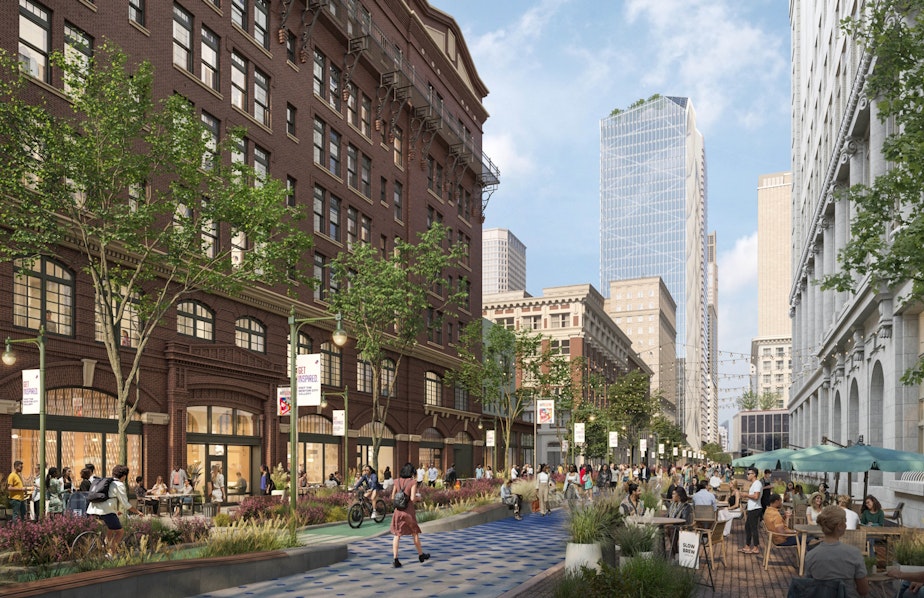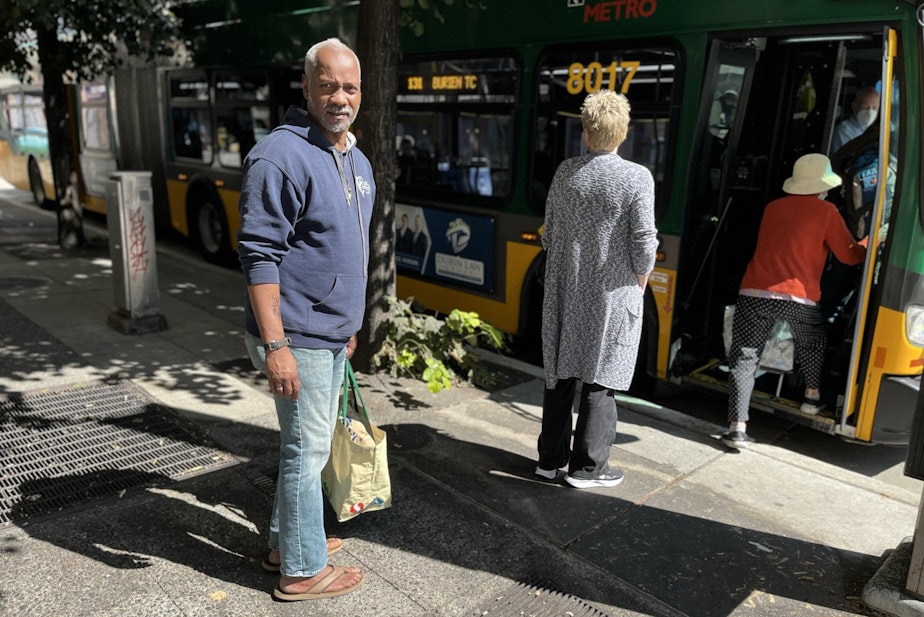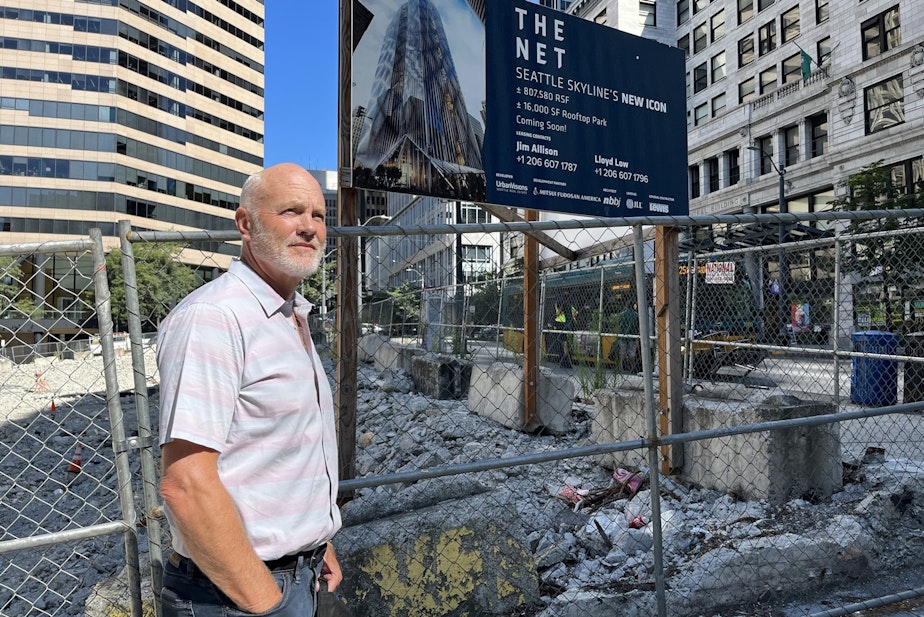'Game-changer' or commuter nightmare? One developer's pitch to pedestrianize Seattle's Third Avenue

A high-rise developer in downtown Seattle wants to turn Third Avenue into a pedestrian zone, with café tables, landscaping, and bike paths. The idea is meant to spark debate about how to revitalize downtown.
Critics say the idea has some merit, but disregards Third Avenue's importance as a transit corridor.
E
very day, 25,000 people board a bus on Third Avenue in downtown Seattle. They include people like Jack Dorsey, who shares a name with the founder of Twitter.
“I’m Jack Dorsey on the other side of the fence. My folks are out of Baltimore.”
Dorsey lives the Seward Park neighborhood, but comes this way to stock up on food.
Sponsored
“All the good grocery stores are up on Capitol Hill," he explains. Even considering the bus transfer on Third, the trip "doesn't take that long."

His trip doesn’t take that long in part because Third Avenue is devoted almost entirely to buses. Using four lanes, buses leapfrog each other, rumbling by like a herd of elephants.
For all its efficiency and bustle, Third Avenue is unlikely — in its current state — to draw a crowd wanting to hang out at cafe tables. There are all those buses; there aren’t a lot of trees. And then, there’s all the concern about crime and public drug use, which has proven challenging for both visitors and local businesses.

Sponsored
That concern can be seen in the way storefronts on the street gird themselves against perceived threats.
For instance, Jeff Frame, with a company called Riot Ready, is installing polycarbonate acrylic panels at the SEIU union headquarters on Third.
“This is just to prevent somebody from being able to break the window and get into the building,” he explains.
So, could it withstand something like a bowling ball being thrown at it?
“Yeah, it would not break. You could take a sledgehammer to it," Frame says. "The glass behind it might break, but they wouldn't be able to get in."
Sponsored
F
or years, Seattle has partially addressed concerns about public safety by flooding parts of downtown with people and programming. That’s been the approach at Westlake Park, for example, where you can play ping pong and giant chess, and patronize food trucks. The programming, run by the Downtown Seattle Association, is seen by many as successful — as evidenced by the contract awarded this year to the association to expand that kind of work further south.
Greg Smith, a local developer, says we need to take that same approach on Third Avenue. He wants to turn it into a pedestrian paradise, like something you might see in Europe.

“Imagine you could just start down at Seattle Center, and with the goal that you're gonna end up down in the Chinatown International District," he says. "And along the way, you're going to have cafes, you're going to have music you're going to have green space, lots of people. You know, that is how you’re gonna make a successful residential neighborhood. You need a place to get out and go sit, and see your neighbors, meet other people.”
Sponsored

Smith’s company Urban Visions has a stake in Third. He owns a vacant lot there, and plans to build a tower on it.
His ideas build on a 2019 analysis by the Downtown Seattle Association that recommended major pedestrian improvements to Third Avenue, such as widening sidewalks, to bring it in line with similar transit streets in cities like Denver and Vancouver, Canada.

But Smith takes things further when he proposes moving all of Third Avenue’s buses off that street, to make room for bike lanes, landscaping, and outdoor cafes.
Sponsored
He says the buses can be replaced by light rail trips, or can be consolidated into a bus shuttle service running on Second and Fourth avenues.
“I think it would be a game-changer for the city,” he says.
K
ing County Metro is the agency that owns the buses. Metro planner Graydon Newman says he’d welcome pedestrian improvements on Third Avenue, but he’s concerned about talk of kicking out the buses.
Standing on Third at rush hour, he lists off the transit investments taxpayers have made there. He starts by pointing at the ground.
“There’s a lot of actual physical pieces of equipment that run underneath the sidewalks," Newman says. Underground wires power the real time information signage you see at some RapidRide stops. And if you look up, “you’ll see there’s overhead wire where our zero-emission electric trolleybuses operate.”

But the biggest investment of all, he says, is the fact that Third Avenue is reserved for buses during much of the day.
That allocation of real estate makes Third Avenue the envy of transit agencies in other cities, he adds.
I
n a way, these two competing visions for Third Avenue reflect the larger conversation about how to revitalize downtown.
Most experts agree it will mean converting older office towers to residential spaces.
After those residents move in, Smith says, it’ll only increase pressure on the city to provide more outdoor spaces for people who live there.
For now, officials hope to do that in a way that protects the value of Third Avenue as a major transit corridor.




